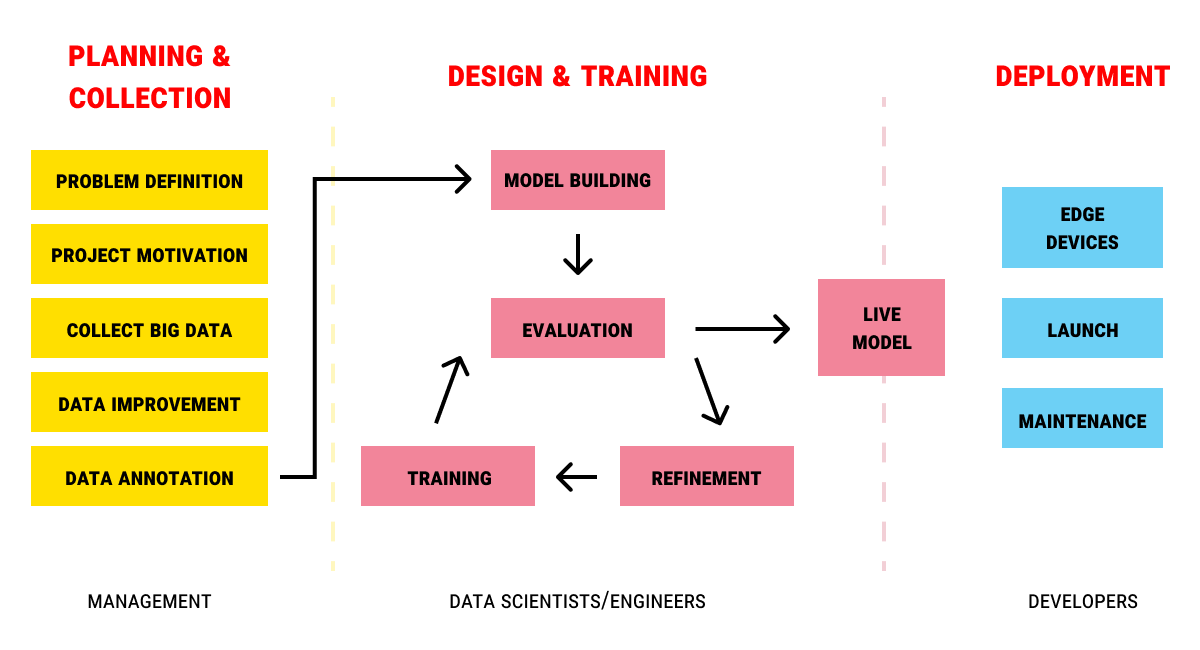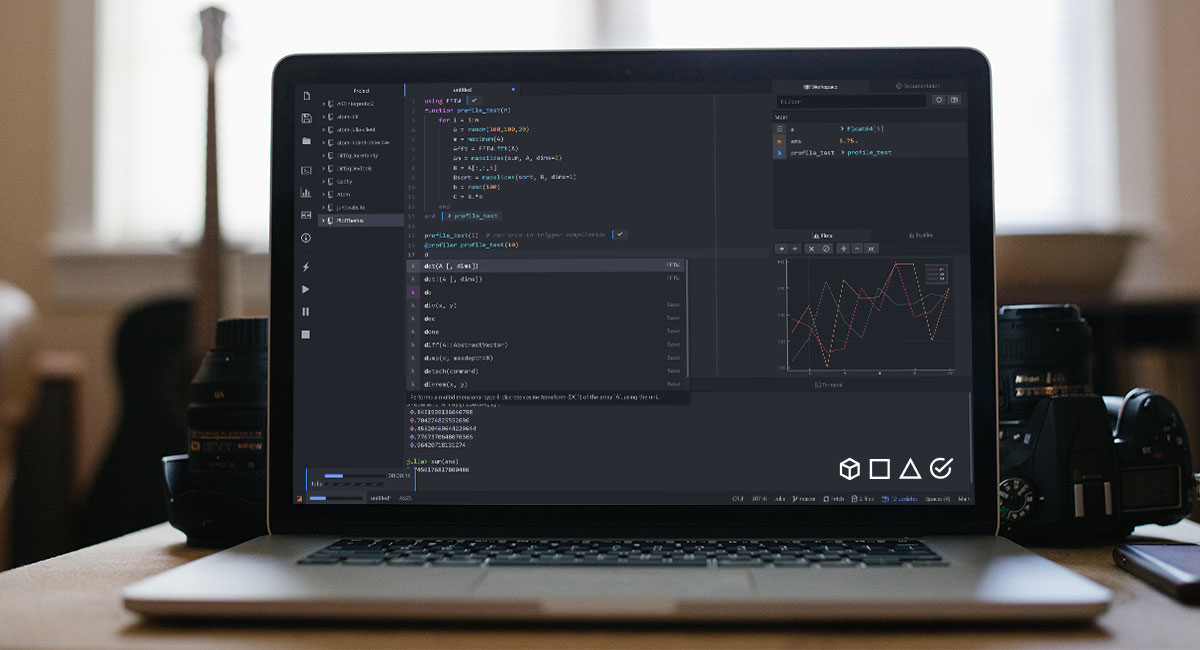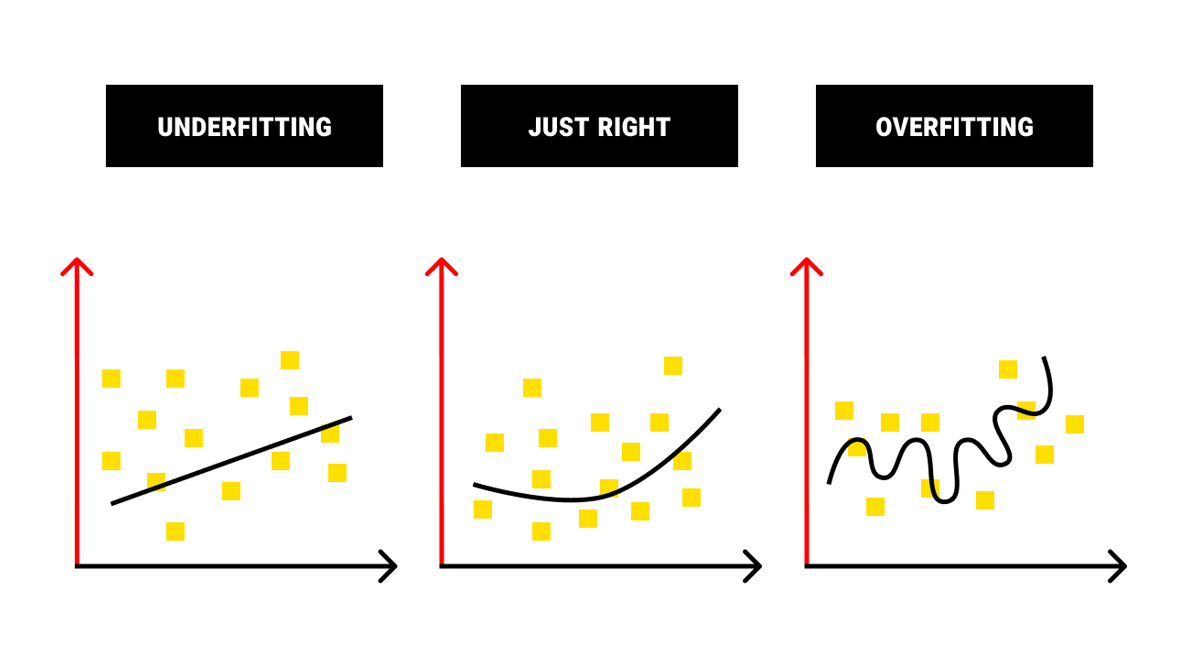The Lifecycle of an AI Project in 2020: A Detailed Breakdown

We live in the world of global market struggle and competitive advantage. Thus many companies strive to balance the growing competition with the automation and smart analysis offered by artificial intelligence. However, businesses are not always ready to have artificial intelligence shoved into their processes without preparation or careful planning. Moreover, while C-suite professionals are knowledgeable in strategic goals and comprehensive management practices, the understanding of an AI project might not be in their forte.
In order to adopt an artificial intelligence project smoothly and make it work for your business, there's first the need to gain awareness of its scale. In fact, here's a handy scheme on the hierarchy of needs to showcase how complicated an artificial intelligence project can be. Today we want to focus on the structure of an AI project and break down all the crucial steps of its development and implementation.
There is no single opinion about the exact stages of an artificial intelligence project. Many experts outline its lifestyle through the three major project stages: planning and data collection, training of the ML model, and the launch of the algorithm and its maintenance. Others divide the lifestyle of an ML project into more concrete project steps (they can have 5, 7, or even 12 of them). This article focuses on the three broad stages of an AI project, as well as the more specific steps that explain each project stage in detail.

Tip: We adhere to the numbered list but, in reality, there is usually an overlap between the stages of an artificial intelligence project. Sometimes it's even necessary to go back to step one and start from the beginning. More on that later, but for now…
Stage I. Planning and Collecting Data for an AI Project

This is arguably the most important part of your AI project. Why? There's a couple of reasons for it. First, this stage involves the planning and motivational aspects of your project. This means that you'll need to calculate the potential profitability of the future ML model and work out the process of its adoption. Second, it's important to start strong if you want your artificial intelligence project to be successful. There's a great phrase that characterizes this project stage: garbage in, garbage out. This means if the data you collect is no good, you won't be able to build an effective AI algorithm, and your whole project will collapse.
But let's start from the beginning.
Step 1: Houston, We Have a Problem
While a lot of businesses benefit from the adoption of artificial intelligence, not every case needs a new AI built from scratch. There are a bunch of interesting AI projects out there. But first, think about the motivation for your future cognitive model. Is there a problem it can solve? Is there a lack of efficiency? Or perhaps a process it can automate, so your employees can focus on more value-adding tasks? Do you need a chatbot capable of mimicking emotion or a facial recognition model, or maybe an attendance monitoring system?
Look for the relevant, real-life use cases that your artificial intelligence project will address. Collect complaints from the users and observations from the employees. The people at the forefront face the problems most often, so they are the best source to allocate and define the problem — and sometimes to propose the solution.
Then, there's the financial aspect. No AI project is worth the effort if it won't bring you profit. Outline the costs and calculate the estimated ROI. Fairly evaluate your access to resources and industry professionals (whether you decide on building your own team or outsourcing at different stages of your artificial intelligence project). Do you still think your artificial intelligence project ideas are worth a shot? Great, let's move to the next project step.
Step 2: Your Mission, If You Choose To Accept It
Now that you know what your problem is, it's time to find ways of dealing with it. Probably you already have at least a vague idea (that’s how the whole project idea started, right?). Let's say, if your insurance company wants to automate the process of processing claims over damaged vehicles, obviously you need an AI algorithm that will evaluate the severity of damages. So, your project will be an image recognition system of some sort. If you don't know where to start, explore the solutions other businesses developed for similar problems. Besides, experienced data science experts will likely offer you an option or two.
Next, plunge into the technical stuff. Elaborate on the methods of supervised learning or model the architecture of the neural network. Seek viable hardware and software options that your proposed machine learning model requires. This can be done on later project stages. But it's better to do this beforehand to save time as your artificial intelligence project progresses. Done? Great, now it's time to get practical.
Step 3: Here Comes the Big Data Cavalry
Understanding what data your AI project requires is paramount. This is where the "garbage in, garbage out" principle plays out: if the data you collect is low-quality or insufficient, your ML model will not work, however well-built it might be. So this project step is about collecting data that is:
- Big (the more, the better);
- Relevant (matches the problem);
- High-quality (credible, real, and well-structured).
class="f20 mb2 mt0">
Such data can be hard to find and collect for your artificial intelligence project. We advise two sources:
- Internal data: your users (CRM reports, statistics from payment applications) and sensors (company's documentation, image datasets from your cameras, etc.);
- External sources: third-party sites and open-source datasets (this type of data cannot be used as-is and should be further preprocessed).
Tip: Collecting data is not commonly a one-time event but should be performed on a regular basis during the project (that's how you get high-quality big datasets).
Step 4: Scrub Your Data Clean
After you've collected the data, it's important to preprocess it. This means that during this project step, you'll need to reformat, clean, and analyze the collected data. To have a truly nice piece of artificial intelligence, reformatting is necessary to provide structure to the data. Anonymization helps to protect the sensitive bits of data. Augmentation allows us to improve the diversification and potentially compensate for the edge cases. Normalization of the data helps to avoid biases and blind spots. We have a great article on the challenges of data collection that explores this subject in more detail.
This is also a good time to use some unsupervised machine learning methods to preprocess your data. It's a great way to improve its quality and prepare it for the next step of your AI project: annotation.
Tip: Visualization of the data is always a good idea to check it for consistency and lacunas. It's much easier to analyze even big data when it's represented in graphic form. Usually, data analysts know how to create graphs, schemes, tables, and so on.
Step 5: The Bottleneck of Data Labeling
Data labeling is where the AI project development is at its narrowest. But it's also the defining time for your artificial intelligence project: correctly labeled data is your gateway to the successful implementation of the AI project.
Why the paradox? Because data annotation is an expensive process. It is also labor-intensive and time-consuming. While 80% of an AI project time is spent on data-related tasks, nearly a quarter of it is spent on labeling.
Of course, not every artificial intelligence project needs this step (e.g., neural networks and deep learning algorithms). However, the majority of machine learning algorithms rely on data annotation. And if experts do not mention this step as part of the AI project lifecycle, it's because most companies don't annotate their data by themselves anymore. Why? Because it requires knowledge of tools and techniques in different types of annotation in Computer Vision and Natural Language Processing. Outsourcing is the more efficient option for a lot of businesses, cost and money-wise. Give us a call and make sure for yourself! :)
Stage II. Training your ML Model

If the first stage of an artificial intelligence project is the most important, then the second stage is undoubtedly the most interesting from a technical creative standpoint. This is the time for you to work on your machine learning model, to engineer features, to build the algorithm, to train it, and to see the first results. Let's break down each of the steps of this project stage.
Step 6: Build for the Future
As you already have your data collected and annotated, the next logical step of your artificial intelligence project is to design and construct your model. Commonly this project step may be parallel to data collection and labeling, or it can start right after you've researched the solution and started to model the architecture of your future AI.
Tip: Building a model can be significantly simplified by repurposing existing (usually open-source) projects. The AI models are usually written in popular languages such as Python or Java and can already be trained on broad databases. To use such a model, you will need to take off a few layers in order to ensure its suitability to your strategic goal.
Step 7: Wash, Rinse, Repeat
Next, it's time to train your shiny new artificial intelligence. The basic principle here is to take your annotated data and put it through the algorithm. However, as it usually happens, it's not that simple. In reality, you'll need to repeat this process several times. You can see this step as a training loop of your AI project.
— Training
Training means passing smaller batches of your cleaned and annotated data through your refined model for a specific number of epochs. An epoch is a number of times it takes the algorithm to train on the whole project dataset. During the first few epochs, you will see the low accuracy and performance of your model, which is nothing to worry about. Just like you need time to learn a new language, your machine needs time to make sense of the data.
There are two extremes that you want to avoid while training your artificial intelligence:
- Underfitting occurs when the number of epochs is too little. As a result, the ML algorithm fails to spot the patterns in your data and does not provide accurate predictions.
- Overfitting, on the other hand, happens if you train the AI too much. As an end result, your model will be accurate in all the training data points, but it will also accurately reproduce the noise and random fluctuations of the data. When the project gets new data, the model will treat it with all its unnecessary additions. The ML algorithm learns on specific examples but its main task is to learn general concepts. Overfitting results in poor predictions due to the attention the machine gives to insignificant and irrelevant details.

— Evaluation and Testing
Now that you're confident your artificial intelligence is trained, it's time to test it. Testing is done on the unseen data, which is the data that the algorithm never previously encountered. The testing dataset is taken out from the initial data prior to testing.
There are two requirements for the test data to keep in mind:
- Quantity: as a rule of thumb, the training vs testing dataset ratio is about 70/30 or 80/20.
- Quality: the testing dataset should be representative of the real-world problems that your AI was built to solve.
— Model Tuning and Refinement
There is little, practically nonexistent chance that you won't need to tune your artificial intelligence after testing. This project step is crucial since it helps to eliminate the faults of the model and to increase model performance. You will see how your model is getting better through the improvements in evaluation outputs.
Naturally, to finely tune your model, these three project steps of training-testing-refining should be repeated on loop until you get satisfactory results.
Stage III. The Deployment and Maintenance of the AI Model

Finally, you have your model, ready and polished. But it's not yet the end of your artificial intelligence project; the most challenging things are about to happen. It takes that extra effort to make sure your model runs smoothly and delivers the results you desire. Take a look at the last few steps.
Step 8: Living on the Edge
This project step is all about edge devices such as phones and IoT gadgets. We live in the era of pocket technology, and in most cases, you will need to convert your AI model into a smaller, optimized, and efficient form. Do not overlook this important task since it might cost you some customers.
In order to convert for edge devices, your artificial intelligence project will require a mobile developer. This is one of the jobs usually outsourced to a third-party company, especially by small and medium-sized businesses that strive to access techniques and top-tier industry talent.
Step 9: It's Alive!
You've arrived at the project step of the model launch. This is where you should build the web interface or integrate the model into your application/tool. As the artificial intelligence model goes live, you will start getting the first real-life results to prove your efforts were not in vain. Alas, you still need to stay on guard…
Step 10: Ahead of the Curve
Monitoring and maintenance is an essential part of the artificial intelligence project lifecycle. You should create the processes necessary to evaluate the model's performance on real-world data. Make a place for the iterations to be made.
The necessary changes to the model on the go will occur. There will be a need to eliminate errors, to find and close the loopholes found by users and problem spots indicated by your personnel. Besides, do not forget about how quickly our technologies evolve. The changing environment requires retraining and updating of your AI. The artificial intelligence project will be an ongoing task for as long as it is up and running, and you should be prepared for it.
What Else You Need to Know About AI Projects
So we've covered the three major stages of an artificial intelligence project. Let's do a quick recap:
- First, you concentrate on the data. This is the project stage of planning, data collection, cleaning, and annotation.
- Next, your ML model comes into focus. You design and build the algorithm, train it, test, and tune until it's perfect.
- Finally, you make your AI live. From building mobile versions to deployment and monitoring, this project stage is all about making sure the artificial intelligence you've built delivers the results you wanted.
But there are some more things you should remember when considering your AI project ideas. Do not ignore QA on every stage of your ML projects. From collecting and annotating data to monitoring the live algorithm, it is important to make sure there are as little mistakes and problem spots as possible.
Also, when you collect and refine your data, think about how to manage and store your data. Labeled data especially might be quite expensive and hard to store. Besides, you should make sure the data is easily accessible for your current and future artificial intelligence projects.
Last but not least, keep in mind that we live in an era of valuable data. For you, this means that data should be protected at all times. If you consider outsourcing certain tasks (and let's be real, it will happen on one stage of your artificial intelligence project or the other), make sure no sensitive data will leak or be abused. Learn more about GDPR compliance and ISO certification to know what to expect. At Label Your Data, we strongly believe in data protection. Annotation is one of the key steps in an artificial intelligence project, and we make sure to deliver the quality and protection of your data. Get a quote from us to learn how we can facilitate the implementation of your AI project.
Written by
Karyna is the CEO of Label Your Data, a company specializing in data labeling solutions for machine learning projects. With a strong background in machine learning, she frequently collaborates with editors to share her expertise through articles, whitepapers, and presentations.

